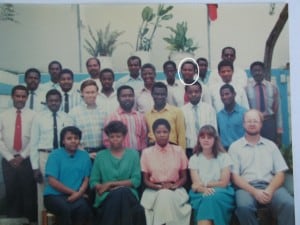Fighting the Restavèk Curse in Haiti
Restavèk is a Creole word for a Haitian child who stays with and works for another family. A restavèk child can be a boy or a girl who is given away by a poor family in order to survive. Frequently, the restavèk’s most basic rights to health and education are denied.
Of these children, 65 percent are girls between age 6 and 14. They are forced to work long hours under harsh conditions and are subject to mistreatment, including sexual abuse.
The restavèk child is the first person to wake up in the morning and the last one to go to bed, sometimes after 14 hours of work that consists of, among other chores, carrying water, washing clothes, taking the owner’s children to school, doing errands, and cleaning the home.
The restavèk child is often beaten for the simplest mistakes. Laws against child abuse exist in Haiti, but unfortunately, they are seldom enforced as children’s rights don’t have a high a priority.
The number of restavèk children reported nationally is between 250,000 and 300,000, and this domestic phenomenon is due to several reasons. (more…)
Continue Reading ›10 Questions With Ephraim Lindor
Thank you to all of you who submitted questions for Ephraim, my esteemed colleague in Haiti! As you all were curious cats and asked more than 10 questions, I picked 10 that I thought were representative of all the questions.
As I mentioned before, Ephraim has got a lot of perseverance. Check out the Compassion Haiti staff photo from 15 years ago. He’s one of only two staff members still remaining.

Haiti is economically considered one of the poorest countries of this hemisphere. However, this country is also unique in its natural and culturally diverse resources.
The Haitian is born with the ability to make the most beautiful artwork in the world. No matter the social class he is issued, the Haitian is capable to transform the simplest raw materials into the most enjoyable items. The Haitian paintings are of the greatest imagination, along with our sculpture in wood, steel, or stone.
Although most of its natural resources are unexploited, Haiti is one of the countries with the most beautiful beaches in the Caribbean.
Besides all of its artistic ability, most of the educated Haitians speak up to four languages: Creole (native language), French (official), English, and Spanish with proficiency.
2. I would love to hear your favorite story of children in your programs whose lives were really turned around by being part of Compassion. (Amy)
Continue Reading ›There are so many success stories that I could share but there this one that is unique to me. It is about a boy named Zaccalot. (more…)


